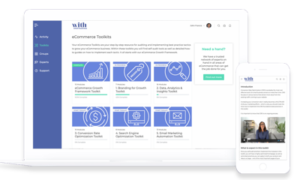What is a category page?
Category pages provide the structure and backbone to assist the user in finding their product. This ensures a smooth shopping experience and not needing the user to flick through hundreds of pages just to find a single product. The following examples showcase what typical category pages can look like.
Skincare Company
- Face Products
- Cleanser
- Toner
- Moisturiser
- Body Products
- Body Exfoliator
- Body Lotion
- Skin Concerns
- Acne
- Dry and Dehydrated Skin
- Rosacea
- Bundle Sets
- Hydration Kit
- Oil Control Kit
Stationary Company
- Planner Supplies
- Planner Covers
- Dated Inserts
- Undated Inserts
- Pen Supplies
- Brush Pens
- Highlighters
- Gel Pens
- Accessories
- Sticky Notes
- Stickers
- Clips
Clothing Company
- Mens Wear
- Tops
- Bottoms
- Outerwear
- Womens Wear
- Tops
- Bottoms
- Dresses
- Outerwear
- Shoes
- Sneakers
- Boots
- Sandals
- Accessories
- Jewellery
- Hats and Caps
Why is a category page so important?
Aside from your homepage and your actual product pages, the next most important page is your category pages. It’s a crucial part of helping individuals in their customer decision journey. Category pages play an important role in helping individuals find their desired product page.
A successful category page is one that is simply laid out with an easy customer experience. However, an important part of ensuring the customer continues accessing your website is to ensure there is a certain level of engagement and to ensure the layout is aesthetically pleasing.
Conversion Rate Optimization (CRO) is a crucial element of marketing that ensures there is an increase in visitors to your website through your product category page.
This can be achieved through:
Using simple language
Most of the time, customers don’t appreciate long, complicated explanations of a product. They want a product explanation in the simplest ways possible. Customers don’t desire to understand the scientific production techniques used to produce the products. They simply want to know the important facts, what the product does and why they need it. It’s also important to ensure that while your target audience is not at a 9th grader level, you should still create descriptions using terminology and structure that a 9th grader can understand.
Parent categories
Parent categories are a simple but effective way to target your audience. Most of the time, your customers don’t have the time to flick through your entire product list and want to find what they’re looking for with a few easy clicks. This is where parent categories come in. They’re the main categories holding your products. For example, Books would be the parent category, and Young Adult Fiction, Mystery and Historical Fiction would be your child categories. It’s also important to understand that you should not overwhelm your audience with too many parent categories. The ideal number is 7 or less.
Category landing page design
Your category landing page is another page that your customers will always direct their attention to. Therefore, it’s important to ensure that the information on the page is simple with only 3 to 4 lines max. People don’t want to spend more than a few seconds reading or skimming the page and if there is too much information, they will most likely exit the page.


